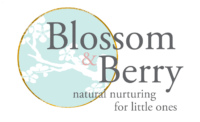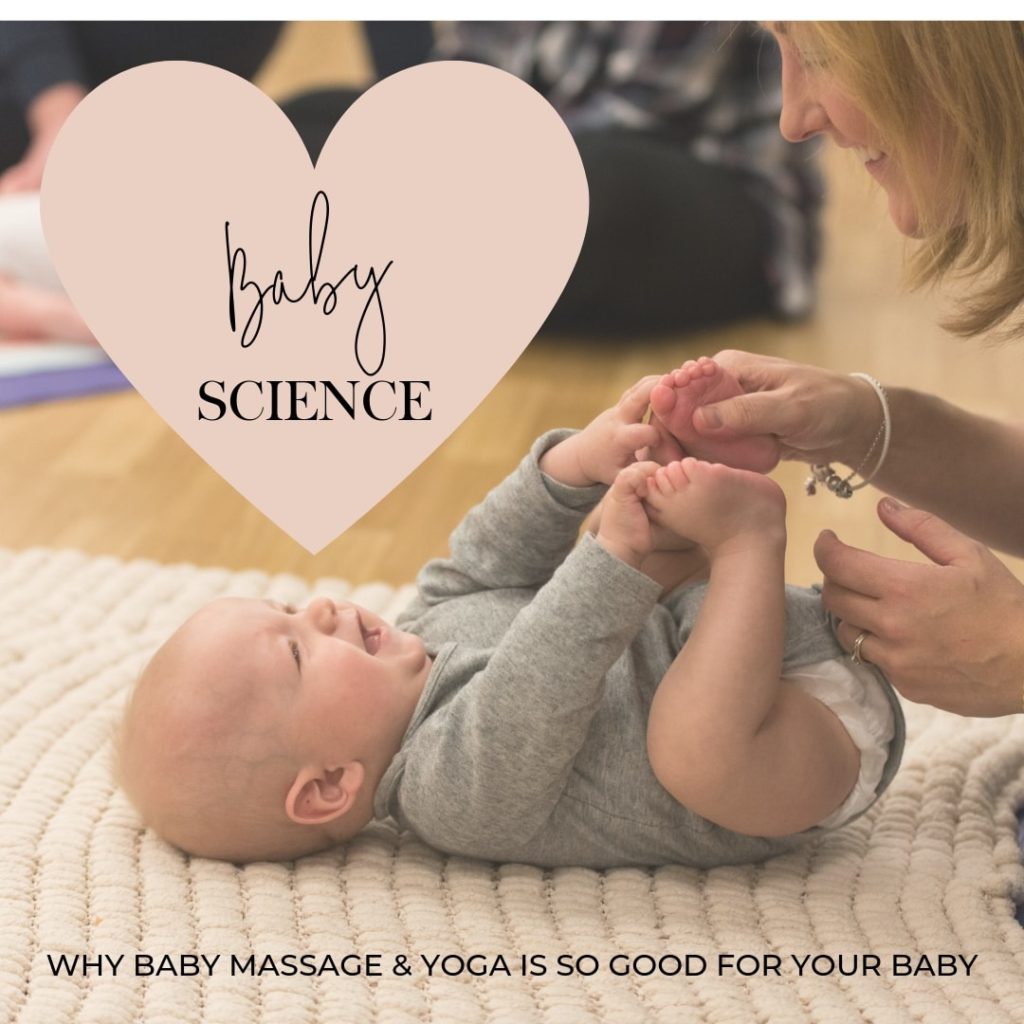How Baby Yoga could support your baby’s reading and writing skills
You may or may not have heard of the terms “midline crossing” or “bilateral coordination” but as a Paediatric Occupational Therapist these are two key areas of development we assess when looking at a child’s ability to coordinate their bodies for various fine and gross motor movements.
Bilateral coordination, or bilateral integration as it is also known, is the ability to use both sides of the body together in a coordinated way and to use one hand as the “specialised hand” (dominant hand) and one hand as the “helper hand” (non-dominant hand). For example, holding a jar with one hand whilst you unscrew the lid with the other.
The midline refers to an imaginary line along the centre of the body that separates the body into a left and right side. The brain is “cross wired” which means that the right side of the brain controls the left side of the body, and the left side of the brain controls the right. By encouraging your baby or child to cross their midline, messages are being sent between either side of the brain (via the corpus callosum) and in turn supports the formation of neural pathways for more efficient communication between the two sides of the brain. This efficiency in communication in turn can promote more refined learning, movement and coordination. In reality this means that the body is able to perform tasks requiring the use of both sides with ease. It makes activities such as getting dressed, or writing across a page with one hand from left to right, as well as read across the page from left to right which requires the eyes to cross midline).
Both theses areas interlink with each other and can often be confused, but it is worth remembering that midline crossing develops from bilateral integration and is a prerequisite to developing hand dominance or a “preferred hand”. Babies start to cross their midline anywhere from 6-8 months, with it become much more refined by ag 4 years. If a baby or child has difficulty crossing their midline, they often end up using the most “convenient” hand (i.e. if an object is on the left side of them, then they use the left hand rather than their dominant right hand). This results in the dominant hand being robbed of precious opportunities to become more specialised and to make better brain connections for the use of that hand for more detailed tasks. A dominant hand is vital when establishing fine motor skills and hand-eye coordination, and particularly in becoming specialised enough for intricate movements such as holding and manipulating a pencil for writing.
There are also other key areas required for crossing midline and bilateral integration, all of which can then go on to support reading and writing in the school years. Firstly, is the vestibular system (a system located in the inner ear that feeds back to the brain the body’s position, movement and supports balance) as interestingly studies suggest that children who have difficulty in processing information via their vestibular system, may also struggle with bilateral integration. Secondly, trunk stability as well as trunk rotation are vital for bilateral coordination and crossing the midline as it allows the limbs to move more freely and steadily to physically perform the task. Thirdly, a good level of body awareness and ability to plan and carry out movement (motor planning) are also required.
Baby yoga and developmental play encourages your baby to develop ALL of these areas:
- The different poses, holds and movements that you learn in a Baby Yoga class promote the development of your baby’s tummy muscles, back muscles and shoulder muscles needed for trunk stability and rotation.
- Baby Yoga and developmental play supports your baby’s ability to identify the two different sides of their body and encourages them to physically cross their midline, therefore increasing messages across both sides of the brain.
- Through dips and swings your baby experiences high volumes of vestibular input in a baby yoga class, supporting their ability to coordinate both sides of their body for a multitude of tasks.
- Touch and movement experienced by your baby gives feedback to the brain about different parts of the body which helps your baby to build up an internal picture of themselves and increases the body awareness needed for moving.
- Movement and play gives your baby opportunity to explore his or hands, and encourages your baby to reach out and explore their environment, improving their hand eye coordination and ability to plan and carry out movements with their limbs.
So this is why I LOVE Baby Yoga as it is an amazing and fun way to ensure that you are working on all the building blocks needed for your littles one’s development, including their future reading and writing skills!
Love Carly xx
Blossom and Berry Team
Mailloux, Z.; Mulligan, S.; Smith Roley, S.; Blanche, E.; Cermak, S.; Coleman, G.G.; Bodison, S.; Lane, C.J. (2011). Verification and Clarification of Patterns of Sensory Integrative Dysfunction. AJOT. Vol.65 (2)
McDougall.B., The Wall. A guide to leaning difficulties in children fopr occupational therspy students. (2012) 1st Edition. Cape Town.
Does this resonate with you?
I am looking for amazing new teachers to join my global team. If you are looking to start your own baby massage and yoga business but you are a little uncertain of the next steps, download my FREE BABY BUSINESS PLAN which covers all the key questions you need to consider before you start.
Click here to download the BABY BUSINESS PLAN
https://blossomberry.activehosted.com/f/9
If you are a bit curious as to what it is like to teach baby massage and yoga, download our FREE 10 things you need to know before you teach baby massage guide.
Click here to download the guide

